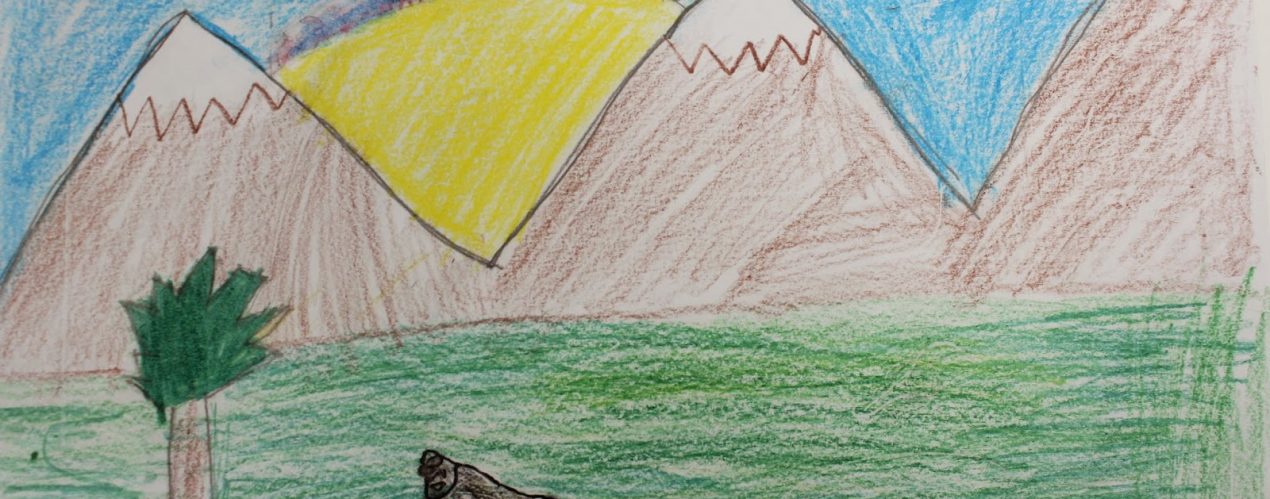The Cost of Creativity
In college I was repeatedly asked the question, “Genein, how did you become so creative?” This question was often prompted from my elaborate project submissions throughout the years, which always went above and beyond the minimum requirements.
It wasn’t until I won various awards for my creative interdisciplinary lessons, that I stopped to really think about the source of my creativity and the cost associated with its development. As parents and teachers, we all desire our children to be creative; but are we willing to pay the cost?
Here are some tried and true tactics to increase your child’s creative capacity. To even the socioeconomic playing field, these tactics were employed by my own mother, a single parent, who raised four highly creative, successful children (with three of them spending their entire school years on free and reduced lunch). She decided to underwrite our creative development with her finances, her time and her undying commitment. The results far exceeded her expectations.
1) Opportunities, Opportunities, Opportunities!
Every child is born creative but we have to set up opportunities to further develop that creativity. Tap into local community events. Many museums, performances and university events offer free admissions on certain days or showcase free musical or theatrical patio performances for families. Even going to a Michael’s Crafts Store on family night can pump up the creative juices your little ones.
2) Allow Them to Have Access to the Arts
To my mother, this was common sense, but to people that currently control the funds, it hasn’t been that obvious. From placing us in the theatrical ‘Charlotte’s Web’ to watching us march heel-toe across a football field while playing ‘Oye Como Va’ during half-time, she somehow knew that exposure to the arts would have a significant impact on our advanced cognition. Look into school or subsidized community center programs or even create choreography in your own living room. To this day, we still do our world renown ‘Proud Mary’ act around karaoke venues! Of course, I’m Tina.
Singing in the car, clapping to various rhythms or making up movements to a beloved song will all get your children thinking creatively. Then, they will take the initiative to start producing their own art in whichever form they choose. Watch them, support them and the end results will pay great dividends for years to come (even if they never become the next Mozart, Picasso or Alvin Ailey).
3) Speak with them!
All children suffer when no one is speaking directly to them. It has already been shown that students of low-income families enter school with significantly fewer words than their more affluent peers. I happened to come of age in the 80’s before the advent of cell phones, so my mother had to talk to us when embarking on outings and grocery trips. My siblings and I had to engage in conversation because we didn’t own a GameBoy to steal our attention. To create better storytellers, writers and thinkers, talk to your children and have them talk to each other.
4) See The World or At Least Go Outside Your Neighborhood
Traveling is contingent on finances but somehow my mother saved a little bit of money during the school year to take us on summer trips. Though ‘Cup of Soup’ and cheap motels were all we could afford, the experience of traveling to the Lincoln Memorial on the Amtrak train while listening to music of the Civil War was priceless. Expose your children to the wonders of the world around them and you will expand their world and their imagination. It’s one thing to read about Sequoia trees but an entirely different experience to walk through them and gaze up. Start local (like a park or trail) and expand out. Go with groups to reduce costs and connect their learning to other academic areas. Have them use the arts to showcase their experience.
5) This One is the Hardest One (Not Really) – Create or Imagine Something! Try – Fail – Succeed. It doesn’t matter. Just DO SOMETHING!
Everything I attempt to do, it is done in my mind first. My imagination is my most priceless tool. Visualizing a process, a lesson or the way to solve a problem is a key component in my personal creative development. To strengthen your child’s cognitive, creative and imaginative muscles, encourage them to use their own authentic experiences to imagine something greater.
Doing these activities for your children takes investment and sacrifice of your time, energy and perhaps even finances. I’m so thankful my mother paid the cost for us to develop our creativity. I shudder to think where I would be without it.
@geneinletford
Share this post

